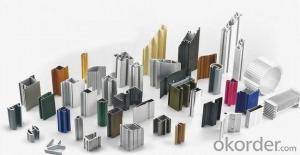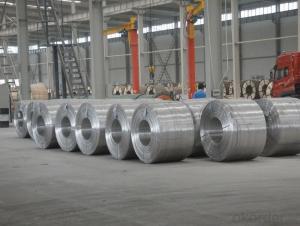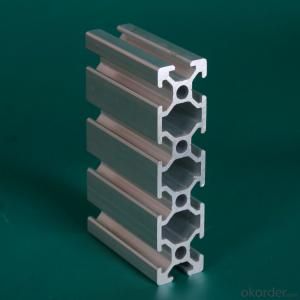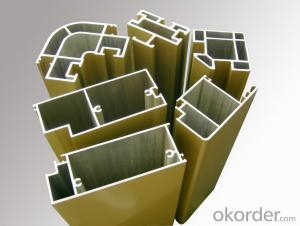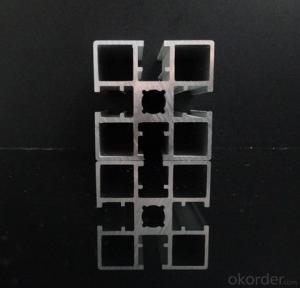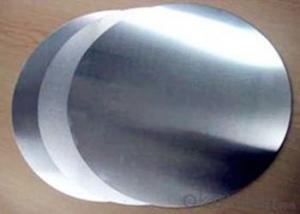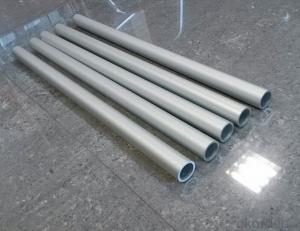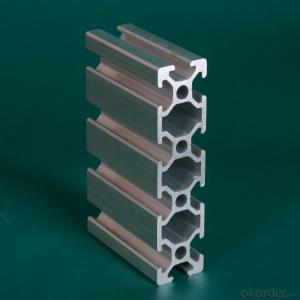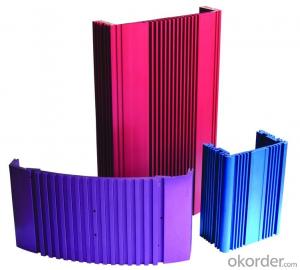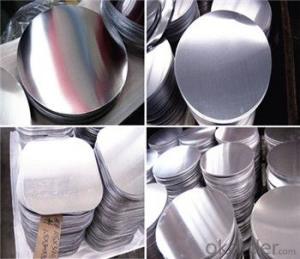Aluminum Extrusions Stock Shapes
Aluminum Extrusions Stock Shapes Related Searches
Led Light Bulbs For Ceiling Fixtures Led Lamps For Ceiling 42 In Ceiling Fan With Light Aluminum Coil Stock For Gutters Aluminum Foil For The Grill Hole Saw For Aluminum Plate Aluminum Tread Plate For Trailer Bow Plate For Aluminum Boat Aluminum Foil For Grow Room Aluminum Foil For Joint PainHot Searches
Stock Price For Aluminum Aluminum Coil Stock For Sale Aluminum Gutter Coil For Sale Used Aluminum Scaffolding For Sale 1/4 Aluminum Plate For Sale Aluminum Bar Stock For Sale Aluminum Round Stock For Sale Aluminum Diamond Plate For Sale Aluminum Scaffolding For Sale Craigslist 6061 Aluminum Plate For Sale Aluminum Dock Plate For Sale 7075 Aluminum Plate For Sale Aluminum Tread Plate For Sale Aluminum Checker Plate For Sale Aluminum Plate For Sale Near Me Plate Aluminum For Sale Aluminum Plate For Sale Aluminum Square Stock For Sale Aluminum Flat Stock For Sale Billet Aluminum Stock For SaleAluminum Extrusions Stock Shapes Supplier & Manufacturer from China
Okorder.com is a professional Aluminum Extrusions Stock Shapes supplier & manufacturer, offers integrated one-stop services including real-time quoting and online cargo tracking. We are funded by CNBM Group, a Fortune 500 enterprise and the largest Aluminum Extrusions Stock Shapes firm in China.Hot Products
FAQ
- Differences between industrial aluminum and iron products
- The so-called aluminum steel, generally divided into sections and plates, pipes and metal products in these four categories, general structural steel is usually refers to the production of metal structure steel for buildings, bridges, ships, boiler or other engineering. Such as carbon structural steel, low alloy steel, steel and so on.
- Aluminum profiles are known for their excellent corrosion resistance. Due to the formation of a protective oxide layer on the surface, aluminum profiles are highly resistant to corrosion, even in harsh environments. This oxide layer acts as a barrier, preventing further oxidation and corrosion. Additionally, aluminum profiles can be further enhanced through various surface treatments such as anodizing or powder coating, which provide additional protection against corrosion. Overall, aluminum profiles offer exceptional corrosion resistance, making them suitable for a wide range of applications, including construction, transportation, and manufacturing industries.
- What are the features of the poor aluminum profiles?
- Poor quality aluminum profile:1, chemical composition unqualified, seriously endanger the safety of construction projects.2 、 profile corrosion resistance function is low.3, the film thickness is thin. The national standard rules of construction of aluminum oxide film thickness not less than 10um (m). The thickness is not enough, aluminum looks easy to rust and corrosion. Some no name and address, production license, certificate of inspection in the aluminum oxide film, the thickness of only 2 to 4um, some even without film.
- Compared to plastics or ceramics commonly used in electrical applications, aluminum profiles exhibit relatively low electrical insulation properties due to their high conductivity. This attribute allows for the easy flow of electrical current. Nevertheless, with proper precautions, aluminum profiles can still be effectively utilized in electrical applications. Anodizing or coating the profiles with insulating materials like epoxy or polyurethane can significantly enhance their insulation capabilities. These coatings establish a barrier between the aluminum and the electrical current, minimizing the risk of conductivity. Moreover, aluminum profiles can be combined with other insulating materials to achieve the desired level of electrical insulation. For instance, in electrical wiring systems, aluminum conductors are frequently paired with insulating materials such as PVC or cross-linked polyethylene to ensure reliable insulation. It is crucial to recognize that while aluminum profiles may possess lower electrical insulation properties compared to other materials, they do offer other advantageous characteristics like high strength, lightweightness, and corrosion resistance. Hence, careful consideration needs to be given to the specific application and electrical requirements before selecting aluminum profiles as an electrical insulation material.
- Yes, aluminum profiles can be used for display systems. They are lightweight, durable, and versatile, making them ideal for creating custom display structures such as exhibition booths, retail displays, and signage. Aluminum profiles can be easily assembled, disassembled, and reconfigured, allowing for flexibility and easy transportation. Additionally, they can be powder-coated or anodized in various colors to match the desired aesthetic. Overall, aluminum profiles offer a reliable and cost-effective solution for display system applications.
- There are several different surface etching options available for aluminum profiles. These options can be used to achieve various aesthetic and functional results. 1. Chemical Etching: This is a common technique that involves applying a chemical solution to the aluminum surface to selectively remove the top layer of material. Chemical etching can create intricate patterns, logos, or text on the aluminum profile. 2. Electrochemical Etching: Also known as electrolytic etching, this method uses an electric current to etch the aluminum surface. Electrochemical etching can create precise and permanent markings on the profile, making it ideal for labeling and identification purposes. 3. Anodizing: Anodizing is an electrochemical process that creates a protective layer of oxide on the aluminum surface. This layer can be further enhanced by etching, which creates a matte or textured finish. Anodizing with etching is commonly used to improve corrosion resistance and provide a decorative appearance. 4. Laser Etching: Laser etching uses high-powered lasers to selectively remove material from the aluminum surface. This technique allows for precise and detailed markings or patterns without the need for physical contact. Laser etching is often used for branding, serial numbers, or decorative designs. 5. Mechanical Etching: Mechanical etching involves physically scratching or engraving the aluminum surface using tools like rotary cutters or diamond-tipped styluses. This method allows for deeper and more pronounced etchings, resulting in a tactile and visually appealing texture. It is important to consider the specific requirements, end-use, and desired outcome when choosing a surface etching option for aluminum profiles. Each technique offers unique advantages and limitations, so it is recommended to consult with a professional or an experienced etching service provider to determine the most suitable option.
- Various surface protection options are available for aluminum profiles, depending on specific requirements and applications. 1. Anodizing is a commonly used surface treatment for aluminum profiles. It involves an electrochemical process that creates a protective oxide layer on the surface. Anodizing offers excellent corrosion resistance, durability, and can enhance the profiles' aesthetic appearance with a variety of colors. 2. Another popular option is powder coating. This process applies a dry powder to the profiles' surface through electrostatics, which is then cured under heat to form a protective coating. Powder coating provides durability, scratch resistance, and comes in various colors and finishes. 3. Painting is a traditional method for protecting aluminum profiles. It involves applying a liquid paint coating that safeguards against corrosion, UV radiation, and enhances appearance. Painting offers a wide range of colors and finishes to meet aesthetic requirements. 4. Clear coating is commonly used when preserving the natural appearance of the aluminum profiles is desired. This coating forms a transparent film on the surface, protecting against oxidation, scratches, and other environmental factors while showcasing the metallic look. 5. Film coating, also known as protective film or peelable coating, is a temporary option. A thin layer of film is applied to protect the profiles during transportation, handling, or installation. The film can be easily peeled off after installation, leaving a clean surface. 6. Mechanical finishing techniques such as brushing, polishing, or sandblasting can improve the surface appearance of aluminum profiles. These methods can achieve desired texture, gloss level, or remove imperfections. While they do not provide long-term protection, they can be combined with other options for enhanced aesthetics. Overall, choosing the appropriate surface protection option for aluminum profiles depends on factors like intended application, desired aesthetics, durability requirements, and cost considerations. Selecting the most suitable option ensures the profiles' longevity and performance.
- Can Linqu aluminum profile factory have 100 home?
- Two hundred or three hundred also have.AskIn addition to a set of near east outer ring and other small scale enterprises, which are located in theChasing the answerEast of the ring, the prosperous road is the axis, and the two sides are basically on both sides.
















